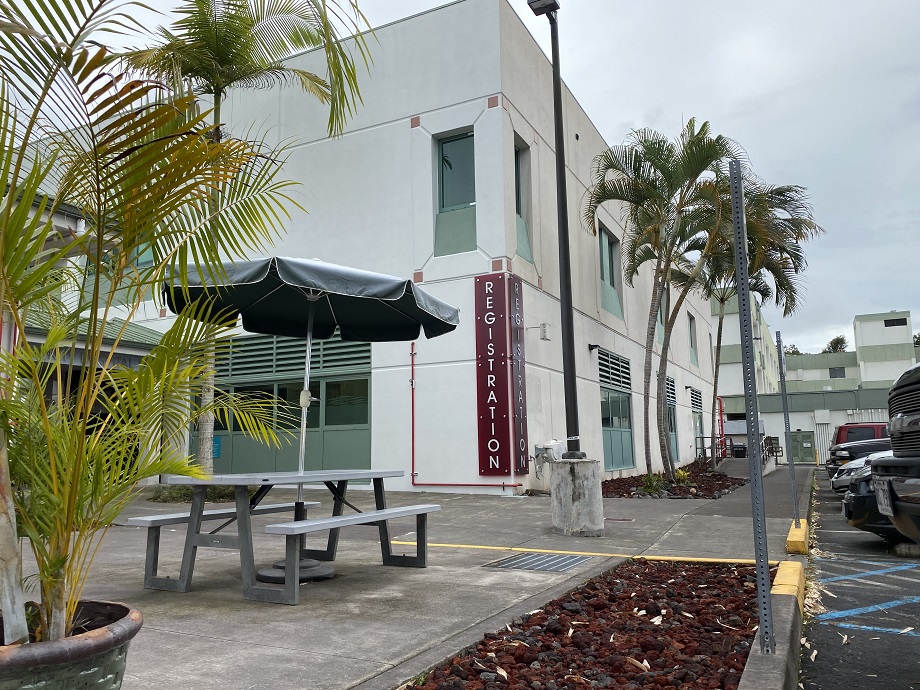Someone planted non-native coral at Kaua‘i beach; state relies on community to report fishy goings-on
All is not well in the waters off ‘Anini Beach on the North Shore of Kaua‘i, where a three-year-old mystery with calamitous potential continues to baffle those tasked with conserving the area ecosystem.
Reef Guardians – an ocean conservation nonprofit based on Kaua‘i and in Santa Barbara, California – routinely monitors coral reefs across the Garden Isle. Members of the group first spied the ‘Anini Beach conundrum while snorkeling in 2021: Several different species of strange coral, introduced to the reef by a person or persons unknown. Whoever was responsible had used zip ties and specialty tools.
The two Reef Guardians photographed their findings and immediately contacted the Hawai‘i Department of Land and Natural Resources (DLNR) Division of Aquatic Resources (DAR). Using genetic testing, DAR confirmed the unfamiliar coral, commonly used in saltwater aquariums, came from a region of the Indo-Pacific nowhere near the Hawaiian Islands.
“If you implant non-native coral into this environment, if they are really resilient species, they can outcompete the native species, which would be problematic because they don’t have natural predators here … We don’t have fish that necessarily want to eat this particular species of coral,” said Heather Yitalo-Ward, DAR’s Kaua‘i district biologist. She is permitted under state law to handle and remove coral from reefs.

“The other possibility is the introduction of disease. We don’t know where these corals came from. We don’t know how well they were taken care of. If they’re introduced into the wild and they have any sort of disease, they could spread that to the native population,” continued Yitalo-Ward, who claimed the non-native coral is in the general vicinity of the ‘Anini Beach boat ramp. “They could have parasites, viruses. Anytime you have introduction of coral species into this native environment, there’s mostly negative consequences. I can’t think of a positive.”
Since 2021, Reef Guardians has continued to locate non-native coral off ‘Anini Beach on a semi-regular basis. DAR has recorded six incidents in total, according to Yitalo-Ward, who said the most recent find occurred in early March.
When asked if the circumstances surrounding the non-native coral were indeed a mystery, Yitalo-Ward nodded emphatically. She has never encountered anything quite like it.
“It is its own interesting story that keeps developing,” she said.
The multiple finds are not due to multiple outplantings, said Reef Guardians board members Robin Mazor and Tom Woods, who made the first discovery. Rather, the non-native coral likely shattered during the first outplanting, causing pieces of coral to separate in the water and establish themselves across a wide area. They may have yet to find them all.
Mazor, Woods and Yitalo-Ward can only guess at the culprit’s motives.
“They likely had good intentions,” said Woods, noting ‘Anini Beach features the longest reef in the state. “I don’t think someone came from off-island with destructive intent.”
Mazor and Yitalo-Ward agreed. They surmise that a misguided Kaua‘i resident, in the process of dismantling a home aquarium, wanted to ensure his coral’s survival and believed outplanting his collection would benefit the existing reef.
Yet the road to hell is paved with good intentions – as shown by the non-native coral’s potential for ecological disruption.
The hypothetical aquarium keeper also committed a no-no before releasing his coral into the sea. Importing non-native corals to Hawaiʻi is against the law.
“But that doesn’t mean it doesn’t happen,” Yitalo-Ward frowned.
The Hawaiʻi Department of Agriculture restricts the importation of corals and many other animals that could be harmful to the ecosystem if they escaped, according to a DLNR blog post, although some people still bring them to put in their aquarium tanks because they think they look pretty.

DAR personnel on Kaua‘i document each case of non-native coral before using chisels to remove them from the water. They then take samples for DNA analysis and “humanely euthanize” the coral colonies using a mild bleach solution, according to Yitalo-Ward.
The Kaua‘i district biologist praised Reef Guardians’ work monitoring local reefs.
“We’re so appreciative of them, because we can’t be everywhere all at once,” Yitalo-Ward said. “We’re so dependent on the public to let us know when they see things that make them say, ‘This doesn’t belong here’ … Call us and we will get someone to respond as soon as we possibly can.”
You can help keep invasive species off Hawai‘i reefs by reporting potential sightings to DAR’s Aquatic Invasive Species team. Send a picture, description and as precise of a location as possible to dar.ais@hawaii.gov.
If you have an aquarium and need to dispose of your fish or other aquatic life, do not release them in the ocean or streams. Even if you have native animals in your aquarium, you could introduce disease into the environment.
The proper way to dispose of legal aquatic life is to either humanely euthanize them or reach out to other aquarium owners or pet stores who may be happy to take your animals. The Hawai‘i Department of Agriculture has an amnesty program that allows anyone to turn in illegal animals without penalty. See https://hdoa.hawaii.gov/pi/pq/amnesty-program-2/ for more information.
If you have coral, regardless of whether it is native or not, it is illegal to sell it or cultivate it without a permit. Contact your local DAR office for guidance.
If you see illegal activity, you can report it to the Division of Conservation and Resource Enforcement at 1-855-DLNR-TIP (1-855-356-7847), or the Fish and Wildlife Service tip line at 1-844-FWS-TIPS (1-844-397-8477). You can also contact your local DAR office for any questions or concerns.
Address and contact information for the Kaua‘i DAR office – and all other DAR offices in the state – can be found here.
Editor’s Note: This story has been updated to clarify the non-native coral’s place of origin in the Indo-Pacific.













